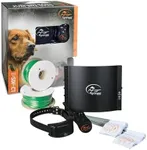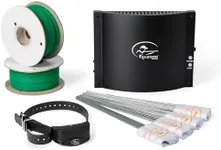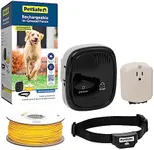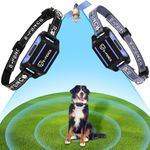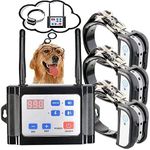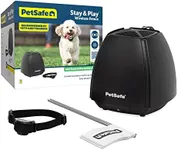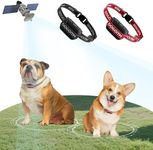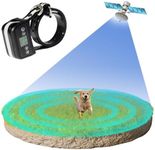Buying Guide for the Best Wireless Dog Fences
Choosing a wireless dog fence is all about finding a system that keeps your pet safe while fitting your yard and lifestyle. These fences use a transmitter to create a boundary that your dog cannot cross without receiving a warning or mild correction. The right choice depends on your dog's size, temperament, and the layout of your property. Understanding the main features will help you pick a fence that works reliably and keeps your dog comfortable and secure.Coverage AreaCoverage area refers to the maximum space the wireless fence can enclose. This is important because it determines how much room your dog will have to roam. Coverage areas can range from small yards to several acres. If you have a small yard, a system with a smaller coverage area will suffice, while larger properties require a fence with a broader range. Always measure your yard and compare it to the system's maximum coverage to ensure a good fit.
Collar Size and AdjustabilityThe collar is what your dog wears to receive signals from the fence. Collar size and adjustability matter because the collar must fit comfortably and securely on your dog's neck. Collars usually come with adjustable straps to fit different breeds and sizes. For small dogs, look for lightweight, smaller collars, while larger dogs need sturdier, adjustable options. Make sure the collar fits snugly but not too tight, and check if the system supports multiple collars if you have more than one dog.
Correction Modes and LevelsCorrection modes are the ways the collar alerts your dog when they approach the boundary, such as sound, vibration, or static correction. The number of correction levels lets you adjust the intensity to suit your dog's sensitivity and training needs. Some dogs respond well to a beep or vibration, while others may need a mild static correction. Choose a system with multiple modes and adjustable levels so you can start gently and increase only if necessary, always prioritizing your dog's comfort and safety.
Portability and InstallationPortability and installation refer to how easy it is to set up and move the system. Some wireless fences are designed for permanent installation, while others are portable and can be set up quickly, making them ideal for travel or temporary use. If you plan to use the fence in different locations or want a hassle-free setup, look for a portable system. For a more permanent solution, consider a system that allows for secure, fixed installation.
Battery Life and Power SourceBattery life and power source are about how long the collar and transmitter can operate before needing a recharge or new batteries. Longer battery life means less maintenance and fewer interruptions. Some collars use replaceable batteries, while others are rechargeable. If you prefer convenience, rechargeable options are ideal, but always check how long a charge lasts. For outdoor use, ensure the transmitter has a reliable power source and consider backup options in case of power outages.
Water ResistanceWater resistance is crucial because dogs often play in wet grass, puddles, or rain. A water-resistant or waterproof collar ensures the system keeps working even if your dog gets wet. If your dog loves water or you live in a rainy area, prioritize a collar with a high level of water resistance to avoid malfunctions and keep your pet safe at all times.

